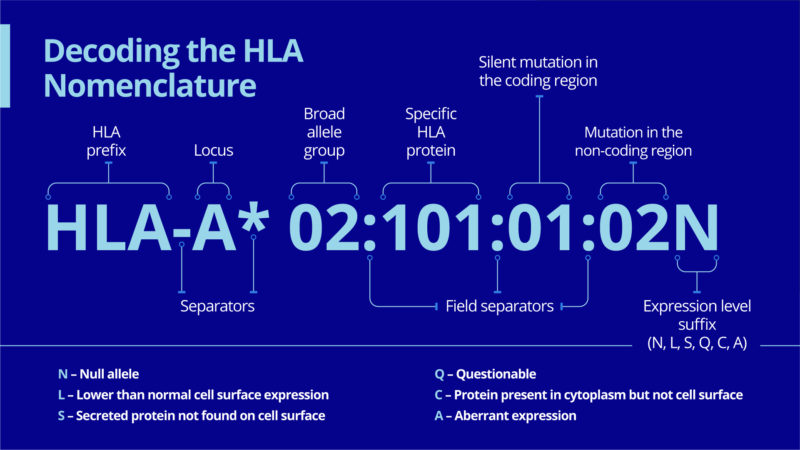HLA Fuels Autoimmunity, HLA Testing Fuels Treatment
Many of us have had the sensation of passing by a random mirror in a public place and wondering, who is that? Do I really look like that? Or, more often, I don’t look like that in my mirror at home. Who is that person who looks too ruddy/hefty/wrinkled, or really too old to be me?
Our immune systems sometimes face the same dilemma. They can recognize viruses and bacteria that cause illness, and destroy them. But sometimes our system does not recognize what it sees. “What is that?” it might ask. “Is that really me, or is that a vicious virus?”
Self/Non-self
Scientists and medical experts refer to this as a failure to see “the distinction between self and non-self.”[1] A “non-self” is remarkably similar to what we feel when encountering that public mirror.
When the immune system does not recognize what it sees as being self, but rather thinks it is non-self, it moves to destroy the non-self. And when the immune system mistakenly attacks these healthy tissues because they are perceived as abnormal, the result can be autoimmune disease.
When the immune system destroys tissues that are healthy non-enemies, we become more vulnerable to recurring infection or disease. In this way, autoimmune disease can manifest as a number of inflammatory conditions.
Genetic causes of autoimmune disease
People whose own immune systems repeatedly deliver infections that don’t heal, because they are fighting off the wrong thing, may have a genetic predisposition to autoimmune disease. Genes might be programming their immune systems to attack healthy tissue. Like a computer glitch that takes days, weeks, or even longer to locate, our own internal program can seem to be housing a perennial glitch.
New research is uncovering many things about how genes impact autoimmune disease. Can we find and identify those genes? It’s complicated: Just like electronic glitches, the autoimmune gene glitch has not exactly been broadcasting its location to us.
Susceptibility, or protection against disease
These misfiring genes might be mapped out using human leukocyte antigen typing, or HLA typing. Antigens that are detectable in blood test analyses. Like a flashlight, HLA typing illuminates gene functions that have until now been in the dark. HLA analysis has the potential to uncover the genetic glitch that drives autoimmune disease.
One way to think about this is that HLA typing could enable us to predict whether one person’s own genes leave them susceptible to autoimmune disease, or, alternatively, provide protection against it.
Nature and nurture
HLA fuels autoimmunity because the antigens contain proteins that fuel the immune response to invaders.[2] Every person’s HLAs are inherited. Environmental factors that occur during a person’s lifetime can contribute to HLAs, but the genetic component is always present.
Patterns of antigens are inherited: Half of the patterns come from the mother and half from the father. Therefore, every person has their own unique pattern (except for identical twins, who share the same pattern). A pattern of antigens, also sometimes called a tissue type, is therefore unique to each of us.[3]
This uniqueness is the reason HLA typing may predict risk and development of autoimmune disease.
We have questions, HLA has answers
Because each person’s HLA pattern is different, HLA fuels autoimmunity and may uncover the roots of autoimmune disease. New findings are indeed revealing the molecular association between HLA alleles and various autoimmune diseases. Blood-test analyses of HLA can identify proteins that live on the surface of white blood cells.[4] These proteins enable immune systems to distinguish between what’s normal and what is abnormal.
Genes direct the formation of HLAs, so HLA typing can speak to the personally specific chance of getting autoimmune disease. We know individual HLAs can ignite the immune system to do the right thing. But we don’t know exactly why they sometimes do the wrong thing.
HLA typing has the potential to clarify that.

Bringing it home
This is where a personalized approach is effective. We offer a convenient drive-in, at-home methodology to collect biospecimens and test for HLA types, thereby delving into what exactly triggers autoimmune disease.
Our personalized testing is already well-positioned, up-and-running, and following new clues as research unveils them. Based on our in-home capabilities, we further offer HLA testing through our central laboratory, by request from autoimmune researchers.
References
- Cruz-Tapias P, Castiblanco J, Anaya, JM. HLA Association with Autoimmune Diseases. In: Autoimmunity, From Bench to Bedside. El Rosario University Press, 2013, Bogota, Columbia. https://www.ncbi.nlm.nihgov/books/NBK459459/
- Immunogenetics and Transplantation Immunology: HLA Typing, accessed February 2021. Johns Hopkins Medicine. https://www.hopkinsmedicine.org/immunogenetics/services/hla_typing.html
- Human leukocyte Antigen (HLA) testing, Canadian Cancer Society, accessed February 2021. https://www.cancer.ca/en/cancer-information/diagnosis-and-treatment/tests-and-procedures/human-leukocyte-antigen-hla-testing/?region=on
- Fagoaga, OR. Human leukocyte antigen: the major histocompatibility complex of man, 2017, chapter 49. In: McPherson, RA, Pincus MR, eds. Henry’s Clinical Diagnosis and Management by Laboratory Methods, 23rd ed. Elsevier.
![]()